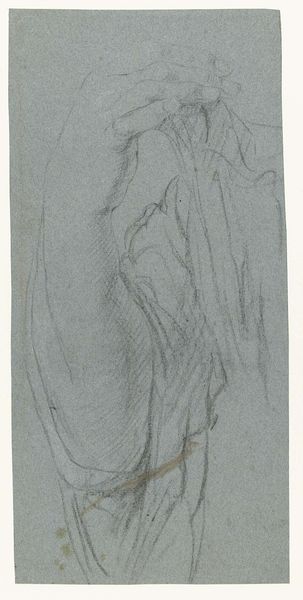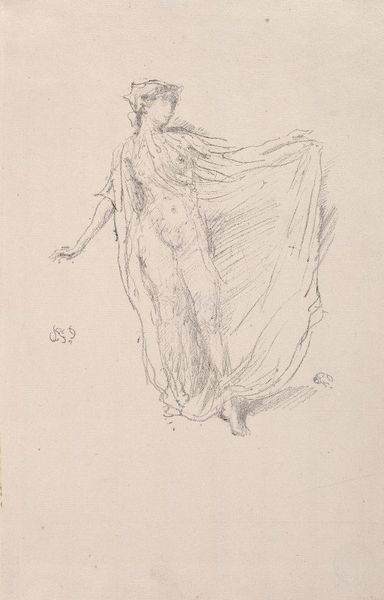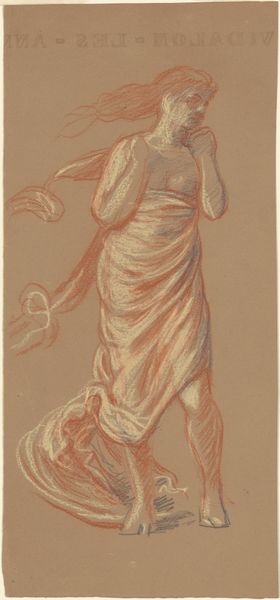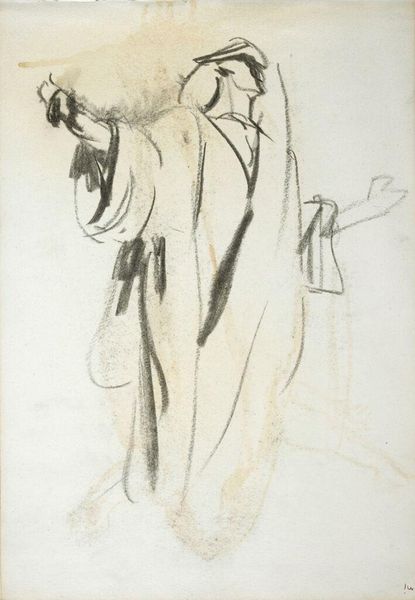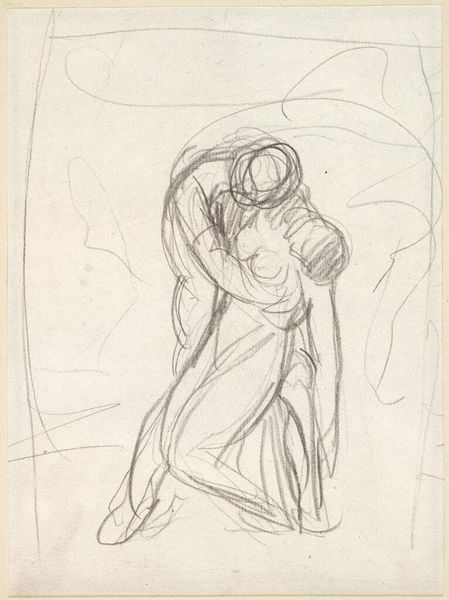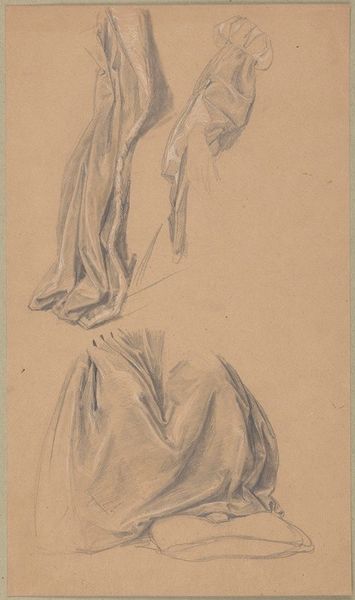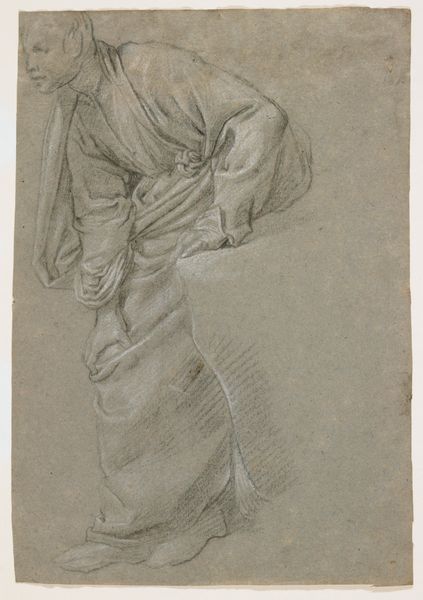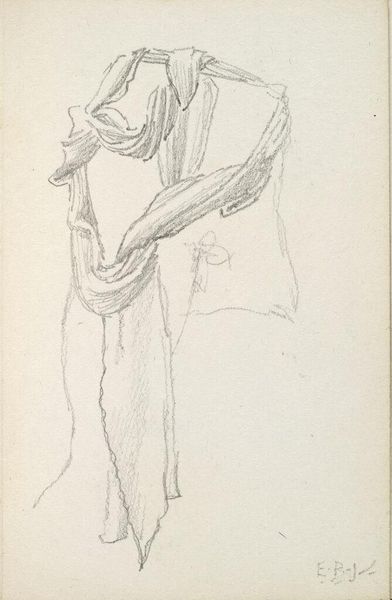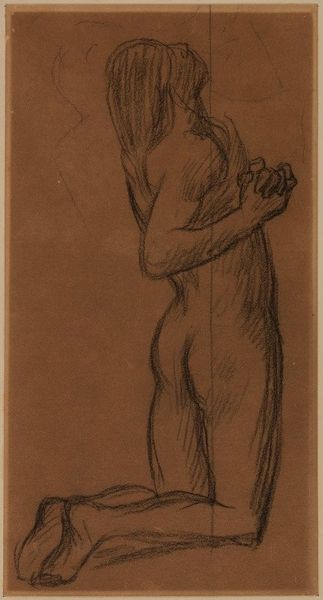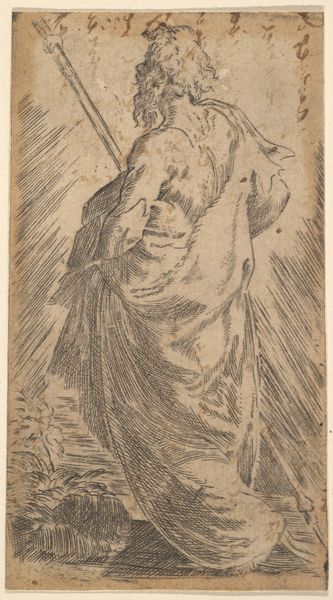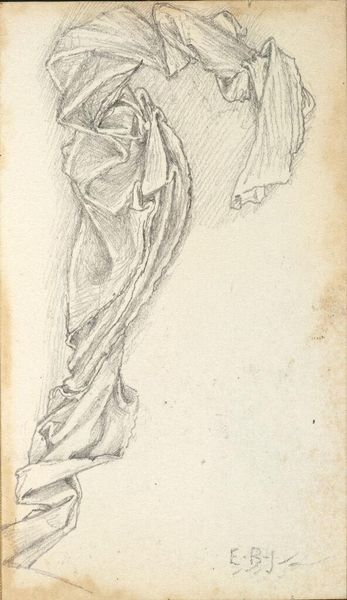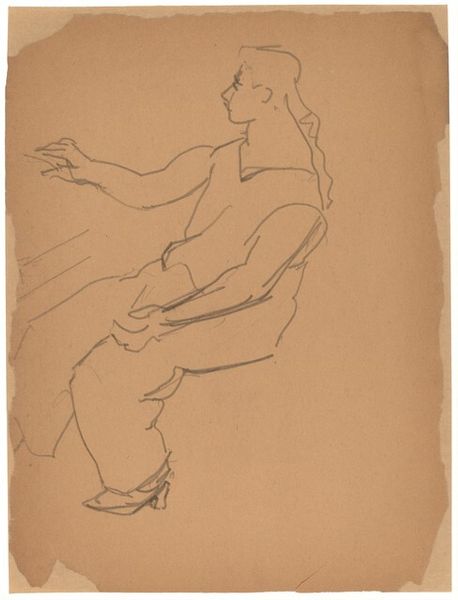
drawing
#
drawing
#
amateur sketch
#
toned paper
#
light pencil work
#
pencil sketch
#
incomplete sketchy
#
pencil drawing
#
ink drawing experimentation
#
portrait drawing
#
pencil work
#
watercolour illustration
Copyright: Public Domain: Artvee
Curator: Here we have "Femme drapée volant, tenant une lyre," or "Draped Woman Flying, Holding a Lyre," a pencil drawing by Pierre Puvis de Chavannes, created between 1893 and 1896. What are your initial thoughts? Editor: There's a striking sense of lightness and ethereal grace, wouldn't you agree? The delicate lines, the subtle shading on the figure and drapery, evoke a feeling of transcendent movement. Curator: Absolutely. And understanding the socio-political context of the late 19th century helps to deepen this appreciation. The figure embodies a type of idealized femininity often seen in symbolist art—a figure of virtue, perhaps even an allegory for creative expression. There’s a clear harkening back to classical archetypes too, reimagined for a rapidly changing modern world. Editor: You can certainly see how he renders form by use of line, creating an interesting tension between flatness and depth. Curator: In what ways? Editor: Well, the pose and composition are dynamic, certainly, but the treatment of the fabric creates areas where it almost dissolves into pure line and form on the page. We can talk about the contrast between the detail of the figure's face and arm, versus the sweeping simplicity of the drape as it catches the wind. What’s interesting, if we examine the way she's holding her instrument, is that de Chavannes appears more interested in capturing the form of the female figure itself. It makes you wonder about the absence of sound. Curator: Exactly! Perhaps her silence is a response to the societal constraints placed upon women artists of the time. Or, to expand that argument further, maybe de Chavannes presents a vision where the woman's power isn't defined through active expression, but through her mere ethereal presence in an artistic landscape largely governed by patriarchal figures. The unfinished quality to it is interesting. The lack of completion perhaps highlights how he sees his own role in society and the creation of the idealized version. Editor: The sketch-like nature lends it a certain intimacy. And look at the quality of light throughout. It softens everything. The drawing possesses an ineffable charm. Curator: The intersection of vulnerability, artistic freedom, and resistance encapsulated within this flying figure offers a powerful lens through which to view both the artwork and the historical context in which it emerged. Editor: Indeed. By paying close attention to formal structures we can perceive all these layers, revealing more interesting meaning behind the marks.
Comments
No comments
Be the first to comment and join the conversation on the ultimate creative platform.

